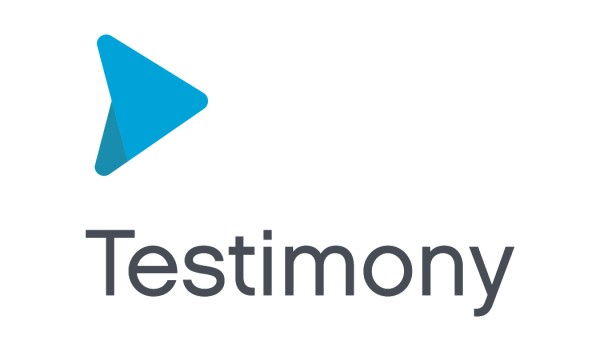Below are the steps that should be completed when refreshing the target system from the source system to prepare it for playback. Care should be taken to review these steps against the steps already documented for refreshing systems in the current landscape. Each organisation should create its own list of refresh steps considering the recommended steps for Testimony as below.
Note that some steps are only required if changing the time of the system which is recommended with TimeShiftX.
| # | Description | Required | Notes |
| 1 | Activate recording on the source system | Yes | |
| 2 | Put the source database into online backup mode | Yes | For details of how to coordinate the backup with the start of the recording, see the documentation here. |
| 3 | Perform a full database copy of the source database | Yes | |
| 4 | Once source database copy is complete, deactivate online backup mode | Yes | |
| 5 | Note the exact timing of the copy so that the transfer to repository step can use this date and time | Yes | |
| 6 | Setup SAP target system (system profiles etc) | Yes | |
| 7 | Optionally setup the target system in a “ring-fenced” network | Optional | |
| 8 | Install TimeShiftX onto application and database server(s) on the target system | TimeShiftX Only | |
| 9 | Ensure batch jobs are deactivated when target SAP system is started (profile setting) | Yes | The recommended option is to run btctrns1 (in SE38) to set all batch jobs to Released/Suspended mode, and then go and delete them all from SM37. Only exception should be the event-dependent RDD* jobs, as without these the transports for the release (line 24) won’t work. |
| 10 | Start-up SAP target database and app server(s) | Yes | |
| 11 | Disable/deactivate recording enhancements on the target using program /BTI/AUT_DEACT_ENH via SE38 on the copied system | Yes | If you are upgrading your system ensure you run this program before starting the upgrade process |
| 12 | Check parameter sapgui/user_scripting | Yes | This value needs to be TRUE which allows the bots to perform the playback properly. Only in playback system. |
| 13 | Check parameter sapgui/user_scripting_per_user | Yes | This value needs to be FALSE which allows the bots to perform the playback properly. Only in playback system. |
| 14 | Check parameter sapgui/user_scripting_set_readonly | Yes | This value needs to be FALSE which allows the bots to perform the playback properly. Only in playback system. |
| 15 | Check parameter login/disable_password_logon | Yes | This value needs to be 0 which allows the bots to login to the playback system. Only in playback system. |
| 16 | Check parameter login/disable_multi_gui_login | Yes | This value needs to be 0 this allows multiple logons. Only in playback system. |
| 17 | Check parameter rdisp/tm_max_no | Yes | As Testimony will be logging on with the user load from the source (which could be production) this should be the source setting +50% Only in playback system. |
| 18 | Check parameter rdisp/gui_auto_logout | Yes | This value needs to be 0. This ensures that the bots and their logged on users cannot be automatically logged off by the user due to time-limits (for example, if the playback is paused or other issues arise) |
| 19 | Check parameter rdisp/max_wprun_time | Yes | Ensure this value is at least the value set in the production system |
| 20 | Check parameter abap/buffersize | Yes | Ensure this value is at least the value set in the production system |
| 21 | Check parameter ztta/parameter_area | Yes | This value needs to be at least 64000. The value checked can be adjusted by changing PLAYBACK_PARAM_AREA in the General Parameters. Only in playback system. |
| 22 | Check parameter snc/enable | TimeShiftX Only | This value needs to be 0 this is required where TimeShiftX is being operated. Only in playback system. |
| 23 | Run post-processing steps such as RFC destination re-pointing, file system re-pointing, printer re-pointing etc. | Yes | |
| 24 | Do not delete/remove source SAP users from the target system | Yes | Testimony requires the users from the source system to playback correctly |
| 25 | Optionally run BDLS if system ID is to be renamed (e.g. PRD to QA1) | Optional | |
| 26 | Optionally use Basis Technologies System Copy GT if BDLS takes quite a long time | Optional | |
| 27 | Deploy changes that form the release being tested (e.g., transport requests or perform upgrade) to target system | Yes | |
| 28 | Deploy Testimony playback enhancement transport to target system | Optional | If the Testimony playback enhancements transport was not applied to the source system you will need to apply that transport here |
| 29 | Ensure Target RFC User exists | Yes | Ensure a system user with the role /BTI/AUT_TARGET_RFC (ensure profile role is generated) This user is for the RFC destination defined in the central system. While setting up bots for the first time you should also use the role /BTI/AUT_BOT_SIMULATION This is an optional Role that is only required for the BOT Simulation Program. This role provides auths for creating Users, assigning Roles to Users and Deleting Users, which is required during the Bot Simulation and can be removed after the simulation is complete. Checking the RFC setup with the user at this point is best practice. |
| 30 | Ensure Meta Data RFC User exists | Yes | Ensure a system user with the role /BTI/AUT_NCO_METADATA_ACCESS (ensure profile role is generated) This user is for playing back RFCs and collecting the meta data to ensure that they operate correctly the suggested user name is /BTI/AUT_RFM although this can be changed in the General Parameters. |
| 31 | Ensure Batch Job User is correct | Yes | Before starting the playback, Testimony will verify the validity and existence of users that are present as creators of batch jobs in the recording data. If one of these users fails this check (i.e. because the user doesn’t exist or is not valid), Testimony will use this user to execute the batch job, we would suggest configuring the default batch user in the General Parameters. The user name defaulted into the general parameters is /BTI/AUT_BTC |
| 32 | Set the workflow batch user’s password | Yes | Use the transaction SWU3 to set the RFC workflow user (WF-BATCH) to the Testimony password as set in the general parameters under the CHECK_DEFAULT_PWD parameter. |
| 33 | Disable Personas | Optional | At present, the use of Personas is not supported by Testimony. The main reason for this is that with Personas, a lot of processing happens on the front end, and Testimony, as a tool which records at the back end, cannot capture this information. In order to disable Personas for the playback, in the target system go to transaction /n/personas/settings and add the following entry: DISABLE_WEBGUI = X. |
| 34 | Take a backup of the target system | Yes | It is recommended to take a backup as this means the target system can be easily restored back to this state for a second run which means if anything goes wrong the system can be quickly restored and a second playback run, without having to repeat all of the above steps again. |
| 35 | Check the SAP system for time inconsistencies | TimeShiftX Only | Use the program RSDBTIME via transaction SE38 to check time inconsistencies between the SAP servers |
| 36 | Check current time travel status | TimeShiftX Only | Use the TimeShiftX command “tsx list” to check the current time travel status of your system this will avoid running multiple TimeShiftX commands which might lead to unexpected times on systems and might cause systems to shutdown. |
| 37 | Required if the SAP HANA version is HANA 2.0 SP04 or lower and Multi Tenant database is used. Run the SQL commands | TimeShiftX Only | Run the following SQL commands in HANA Studio on the System database (Multi Tenant database) ALTER SYSTEM ALTER CONFIGURATION (‘nameserver.ini’, ‘SYSTEM’ ) SET (‘delta’, ‘preallocated_nodebuffers’) = ‘1’ WITH RECONFIGURE ALTER SYSTEM ALTER CONFIGURATION (‘indexserver.ini’, ‘SYSTEM’ ) SET (‘delta’, ‘preallocated_nodebuffers’) = ‘1’ WITH RECONFIGURE |
| 38 | If running HANA 2.0 SP4 or lower only. Run the SQL commands | TimeShiftX Only | Run the following SQL commands in HANA Studio on the Tenant database ALTER SYSTEM ALTER CONFIGURATION (‘indexserver.ini’, ‘SYSTEM’ ) SET (‘delta’, ‘preallocated_nodebuffers’) = ‘1’ WITH RECONFIGURE |
| 39 | If running a SAP HANA database server set the environment variable HDB_TIMER=system | TimeShiftX Only | |
| 40 | Shut-down SAP target system Application Servers | TimeShiftX Only | |
| 41 | Shut-down SAP target system Database Servers | TimeShiftX Only | |
| 42 | Setup virtual clock for the ADM users in TimeShiftX on both the target database and app servers | TimeShiftX Only | It is recommended to use the offset option rather than set a specific time to make life easier for multiple app servers. |
| 43 | Ensure TimeShiftX virtual clock is set close to start of recording time just before playback commences | TimeShiftX Only | It is recommended to slow time down to ensure that there is time in case there is a delay starting playback or playback is slower than expected, time can be sped up if the midnight boundary is imminent or Testimony will pause and wait. |
| 44 | Start SAP target system Database Servers | TimeShiftX Only | |
| 45 | Start SAP target system Application Servers | TimeShiftX Only | |
| 46 | Check the SAP system time | TimeShiftX Only | Use the program RSDBTIME via transaction SE38 to check the time and check for any inconsistencies between the SAP servers |



Post your comment on this topic.